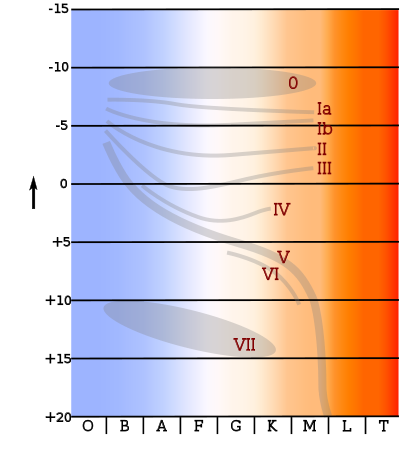- K-type main-sequence star
-
A K-type main-sequence star (K V), also referred to orange dwarf, are main-sequence (hydrogen-burning) stars of spectral type K and luminosity class V. These stars are intermediate in size between red M-type main-sequence stars of luminosity class V and yellow G-type main-sequence stars of luminosity class V. They have masses of from 0.5 to 0.8 times the mass of the Sun[dubious ] and surface temperatures between 3,900 and 5,200 K.[1], Tables VII, VIII. Examples include Alpha Centauri B and Epsilon Indi.[2]
These stars are of particular interest in the search for extraterrestrial life because they are stable on the main sequence for a very long time (15 to 30 billion years, compared to 10 billion for the Sun). This may create an opportunity for life to evolve on terrestrial planets orbiting such stars. Orange dwarfs are about three to four times as abundant as sun-like stars, making planet searches easier.[3]
See also
- Solar twins
- Red dwarf
- Stellar classification, Class K
- Star count, survey of stars
References
- ^ Empirical bolometric corrections for the main-sequence, G. M. H. J. Habets and J. R. W. Heintze, Astronomy and Astrophysics Supplement 46 (November 1981), pp. 193–237.
- ^ SIMBAD, entries for Alpha Centauri B and Epsilon Indi, accessed on line June 19, 2007.
- ^ [1], retrieved on May 6, 2009.
Categories:- Star types
- K-type main sequence stars
- Main sequence star stubs
Wikimedia Foundation. 2010.

